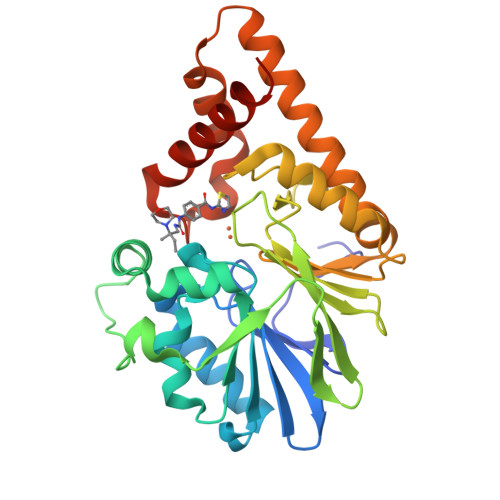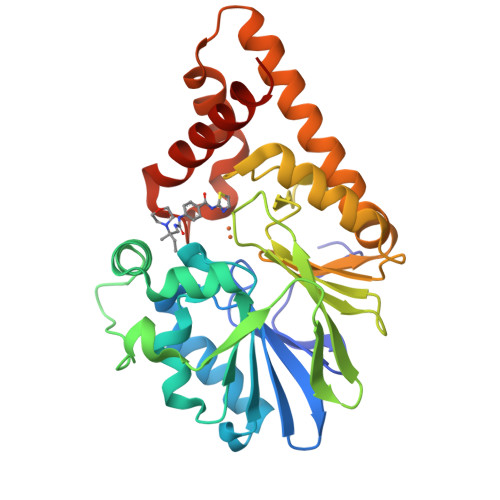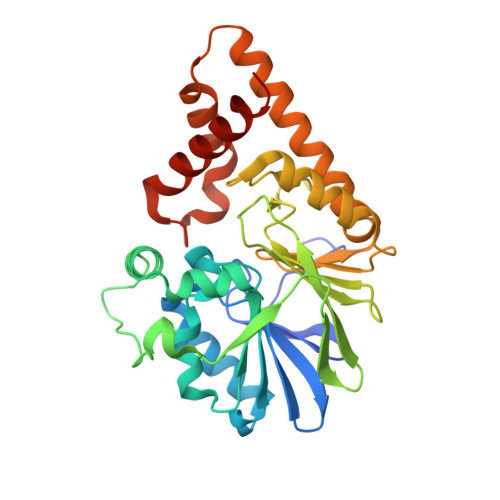Inhibitor Mimetic Mutations in the Pseudomonas aeruginosa PqsE Enzyme Reveal a Protein-Protein Interaction with the Quorum-Sensing Receptor RhlR That Is Vital for Virulence Factor Production.
Taylor, I.R., Paczkowski, J.E., Jeffrey, P.D., Henke, B.R., Smith, C.D., Bassler, B.L.(2021) ACS Chem Biol 16: 740-752
- PubMed: 33793200
- DOI: https://doi.org/10.1021/acschembio.1c00049
- Primary Citation of Related Structures:
7KGW, 7KGX - PubMed Abstract:
Pseudomonas aeruginosa is an opportunistic human pathogen that causes fatal infections. There exists an urgent need for new antimicrobial agents to combat P. aeruginosa . We conducted a screen for molecules that bind the virulence-controlling protein PqsE and characterized hit compounds for inhibition of PqsE enzymatic activity. The binding conformations of two inhibitory molecules, BB391 and BB393, were identified by crystallography, and inhibitor binding was mimicked by the substitution of PqsE residues E182 and S285 with tryptophan. Comparison of the inhibitor-mimetic mutations to the catalytically inactive PqsE D73A protein demonstrated that catalysis is not responsible for the role PqsE plays in driving virulence factor production. Rather, the PqsE E182W protein fails to interact with the quorum-sensing receptor, RhlR, and our results suggest that it is this interaction that is responsible for promoting virulence factor production in P. aeruginosa . These findings provide a new route for drug discovery efforts targeting PqsE.
Organizational Affiliation:
Department of Molecular Biology, Princeton University, Princeton, New Jersey 08544, United States.




















